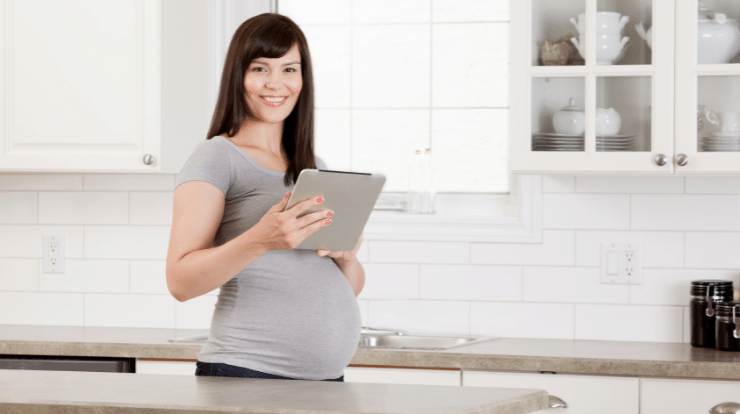
What is cholestasis of pregnancy?
Cholestasis of pregnancy is a condition where bile flow is slowed or blocked. In pregnancy, cholestasis affects the flow of bile from the liver to the gallbladder and into the small intestine. The main symptom is a yellowing of the skin and eyes (jaundice). Cholestasis can be a serious condition, but most women make a full recovery. The condition affects one in every 100 pregnant women.
Cholestasis can be confirmed by blood tests. In some cases, your doctor may carry out a liver function test. If you have jaundice during pregnancy, you may be offered an ultrasound scan of your baby. This is to check the baby’s healthy and growing. Treatment is often not needed and most women make a full recovery after giving birth.
What are the Symptoms of cholestasis of pregnancy?
Following are the symptoms of cholestasis of pregnancy:
- Dark urine
- Light-colored feces
- Intense itching
- You may also have yellowing of your skin or whites of your eyes, and pale stools.
- Fatigue
- Weight loss (losing a lot of fat)
- Nausea or vomiting
How early can cholestasis of pregnancy occur?
Cholestasis of pregnancy usually occurs during the third or fourth trimester of pregnancy, although it sometimes occurs earlier. The rash can be very itchy and comes out in red rashes after more than one week.
What causes cholestasis of pregnancy?
Unsurprisingly, the cause of this condition is poorly understood. It’s unclear whether genetic factors play a role or not. Occasionally, people with cholestasis of pregnancy run in families. There are also several genetic variants that have been identified as contributing to this condition.
Pregnancy hormones cause a lot of notable changes during your pregnancy. Hormones rise in the body as you get closer and closer to delivering, which may alter the normal flow of bile that comes from the liver, which is responsible for helping to break down fats in the body. This can also lead to swelling of your liver and eventually cause intrusions and buildups in your bloodstream. This can produce some skin rashes or itching as a result.
Risk factors for cholestasis of pregnancy:
- Having had cholestasis of pregnancy before, a woman is 60–70% more likely to experience cholestasis again as compared to those who have never experienced it.
- Having a close family member who has been affected by cholestasis.
- Becoming pregnant after having undergone fertility treatments
- If you’re having twins or triplets (Multiple pregnancies).

What food to eat to cholestasis of pregnancy?
Foods to eat include:
- lean meats
- wheat (bread and pasta)
- seeds, nuts, and healthy oils
- grains
What food to avoid to cholestasis of pregnancy?
following are the food to avoid:
- soy products
- sugar
- dairy produce
- processed meats
Is cholestasis of pregnancy dangerous?
Pregnant women with liver diseases should be closely monitored by healthcare professionals. The elevated levels of certain liver enzymes could cause problems for the mother and her baby. The developing fetus is dependent on its mother’s liver to remove bile acids from the blood; therefore, when that doesn’t happen, it can overwork its own system. For this reason, pregnant women with cholestasis should give serious consideration to delivering their child on time once the lungs are fully developed.
Does cholestasis of pregnancy cause liver damage?
If you have previously suffered from liver damage linked with cholestasis of pregnancy, then you are considered to be at a higher risk of developing cholestasis of pregnancy again. Cholestasis of pregnancy also carries risks itself, since it has the potential to exacerbate preexisting liver damage, whether or not you’ve suffered from it in the past.
Can alcohol cause cholestasis of pregnancy?
Drinking alcohol will not in any way lead to a person developing cholestasis. Still, a pregnant woman should avoid drinking alcohol because it can cause complications by making it more difficult to treat the condition and because alcohol can hurt the baby.
Can cholestasis of pregnancy cause diarrhea?
When pregnant mothers develop jaundice, they are often given the advice to eat a lot of food rich in vitamin b, such as liver and spinach. However, a pregnant woman suffering from jaundice may also develop digestive symptoms, such as vomiting, nausea, and diarrhea. These symptoms are usually caused by the fact that the liver is no longer able to carry out its normal function of removing waste materials from the blood. This can cause the blood to become too concentrated, which in turn can cause vomiting.
How to diagnose cholestasis of pregnancy?
Cholestasis of pregnancy is usually diagnosed during routine antenatal care. You’ll have blood tests to check if your liver is working normally. Your midwife will also ask about your symptoms. During your pregnancy, your midwife will monitor you closely. It’s important you continue to go to all your antenatal appointments.
There are a few additional blood tests that a doctor can order to determine the liver’s current state. One of them is the alanine aminotransferase (ALT) test, and another is the aspartate aminotransferase (AST) test.
Treatment of cholestasis of pregnancy:
Cholestasis of pregnancy is a serious condition and it is important for women to be treated as soon as possible. Treatment aims to relieve the symptoms of itching, jaundice, and tiredness. The most common treatment for cholestasis of pregnancy is stopping breastfeeding. Other treatments include taking ursodeoxycholic acid tablets and intravenous fluids.
The best way to prevent this from happening is through testing the blood levels of the individual with a condition, so as to pick it up in good time if these levels start getting out of control.
Ultrasounds are also used to monitor your fetus’s health and development as it progresses in the womb. The doctor may randomly or regularly order a non-stress test to make sure that the fetus is moving about as usual and its heartbeat remains normal for an average of how many minutes for every hour that it’s awake. With these tests, moms-to-be will be able to get an idea of how healthy their unborn child is so they can decide what treatments if any, might benefit them both as they go through pregnancy together.






